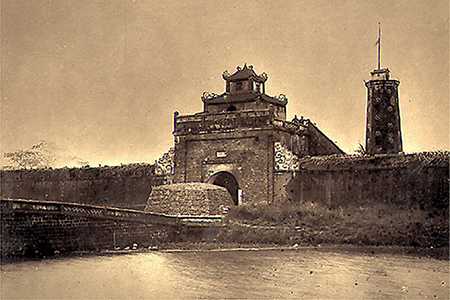A citadel serves both as a military base and a political, economic and cultural centre for the whole country or for a specific region. The citadel in the capital is the highest symbol of a royal dynasty.
A citadel serves both as a military base and a political, economic and cultural centre for the whole country or for a specific region. The citadel in the capital is the highest symbol of a royal dynasty. The architecture of a citadel reflects not only the military strategy, tactics and techniques of each historical period but also the social structure, the economic situation, the talent, skills and arts of the people during each period.

Each citadel has one or several ramparts depending on its specific importance. The Hue Royal Citadel has 3 ramparts. The Tu Cam Thanh, that is, the innermost rampart, shelters the Forbidden Purple City where lived the King and his dependents; the Hoang Thanh rampart, lying in-between the two,
shelters the buildings of various ministries and offices of the Court: the Phong Thanh, that is the outer rampart, shelters an area where lived the court officials, soldiers and service personnel. The population lived outside the citadel. The ramparts were initially built with earth, stone and bricks and were further strengthened with moats. Many citadels in the past were located in mountains and by rivers, as such geographical features might further strengthen their defensive capacity.
Few citadels have been preserved intact to date. Yet, they can give us a clear idea about the talent of our ancestors in the construction of defensive structures, which also contributed to Vietnam’s architectural art.



